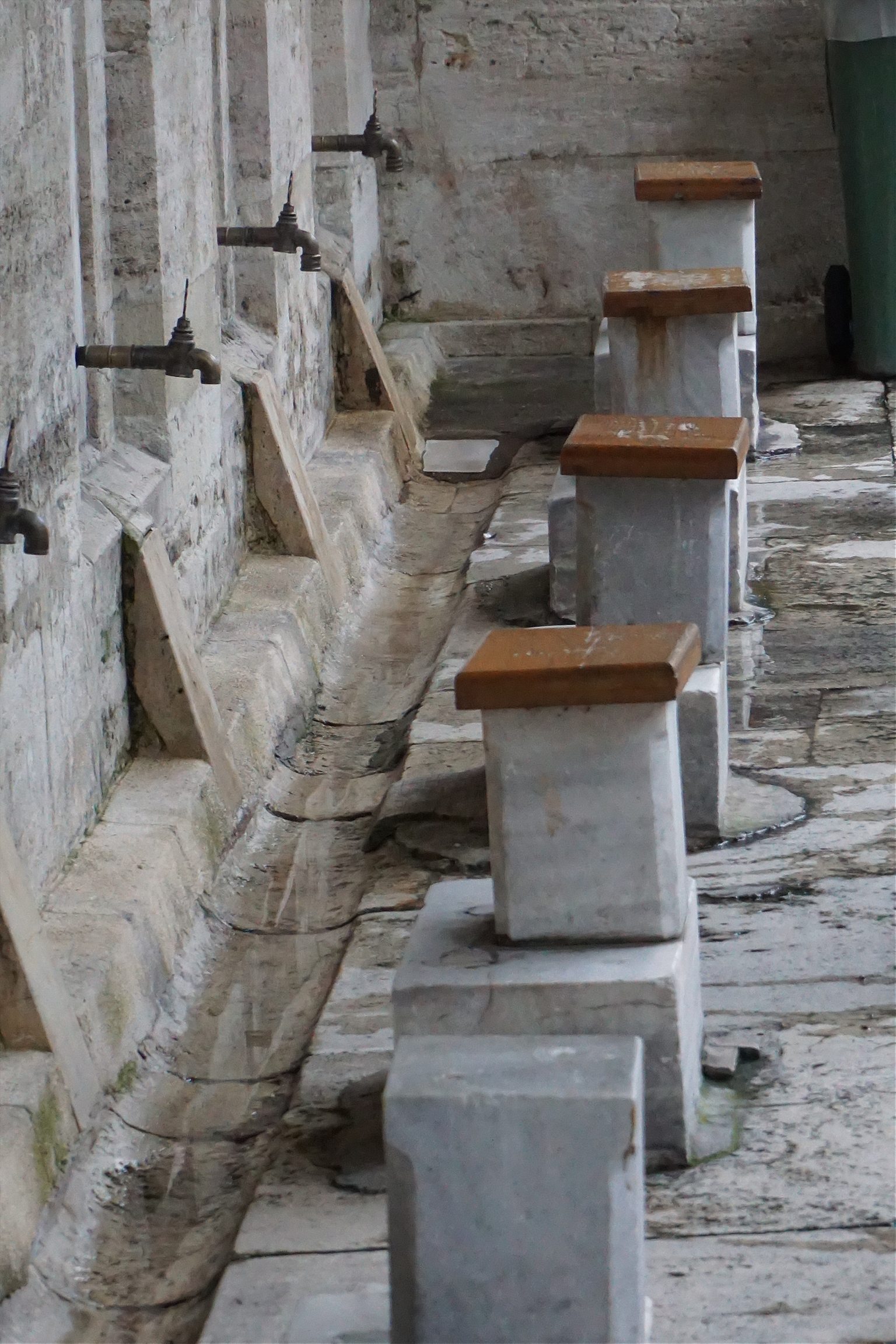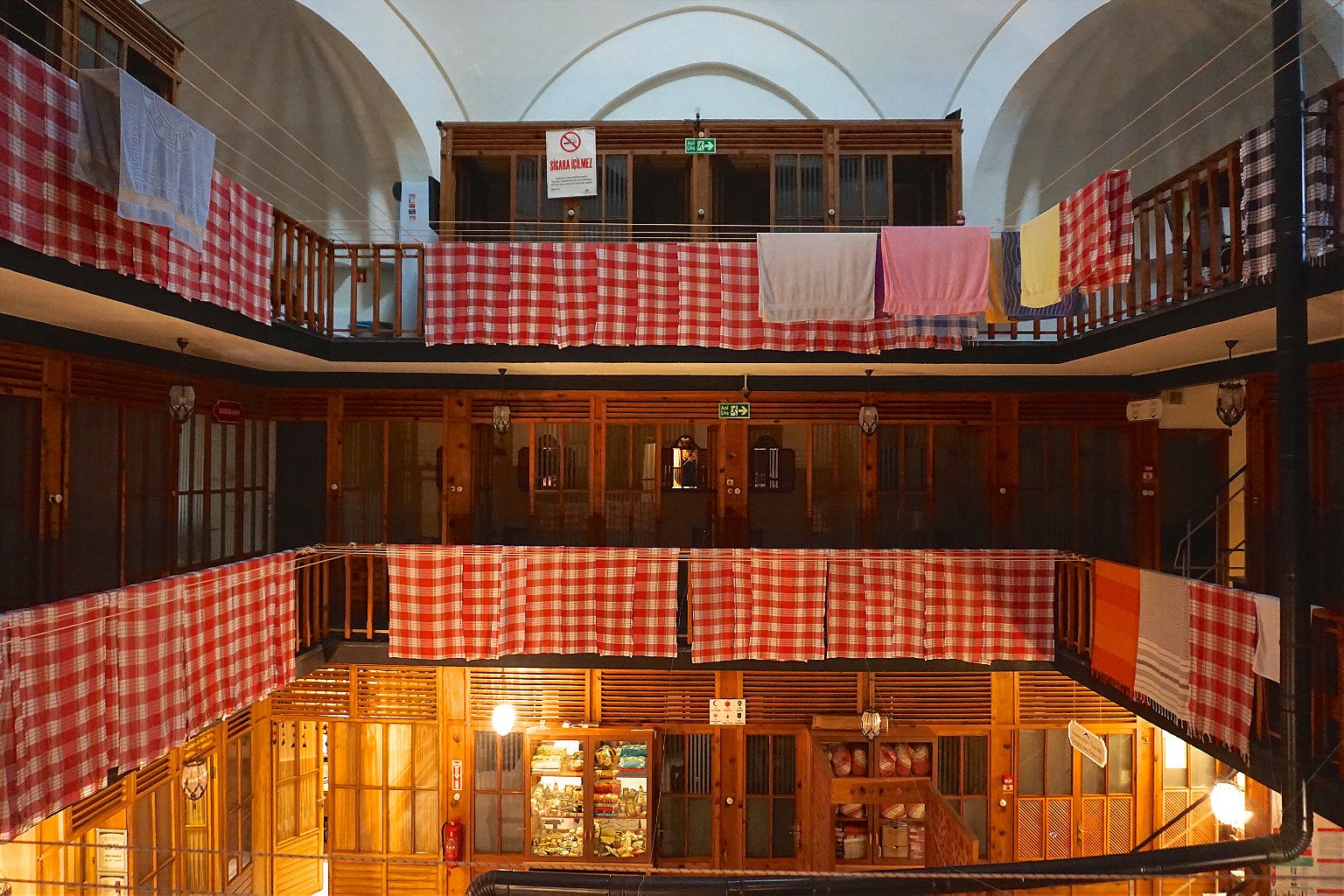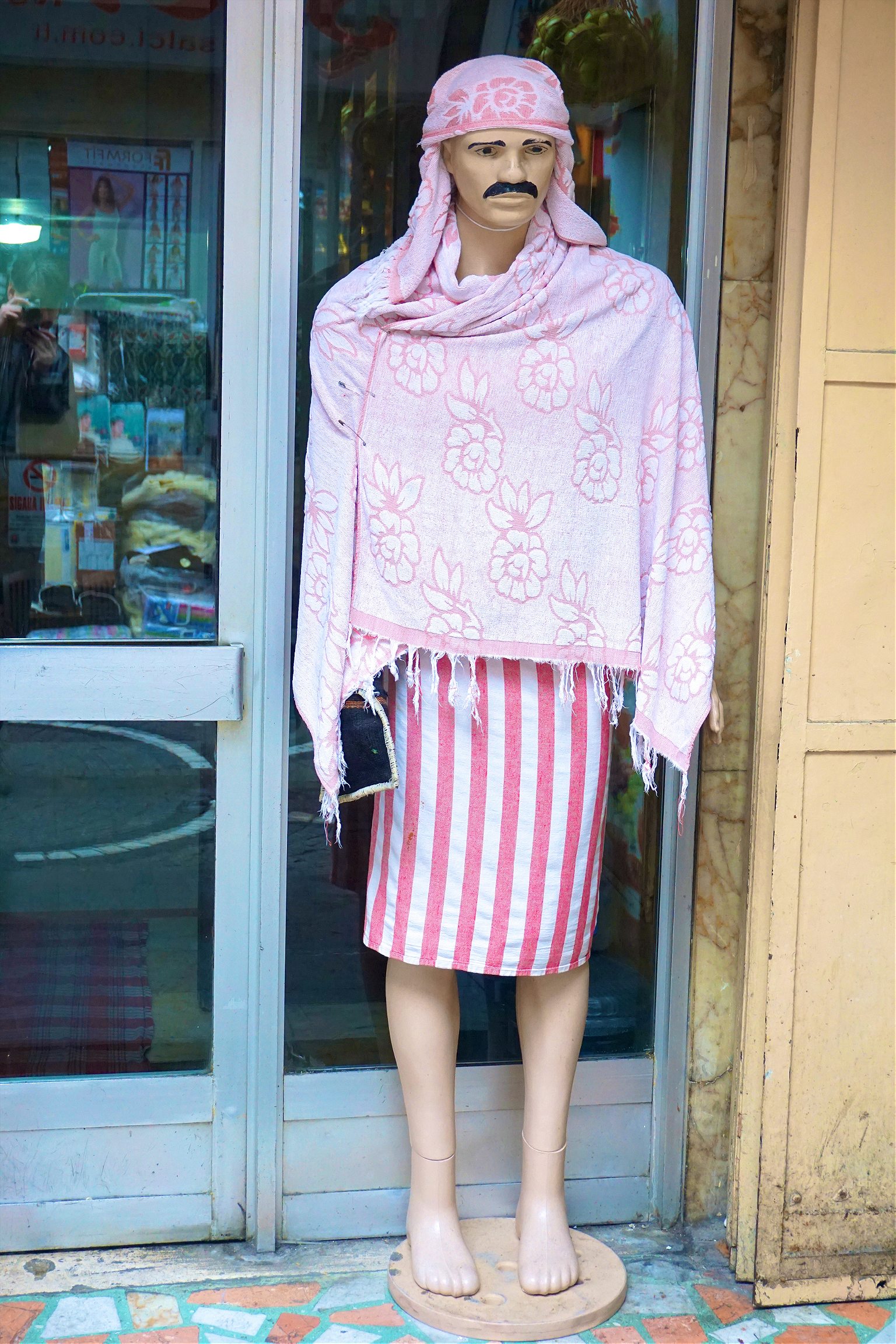A waterlogged Canadian takes a very specific tour of Istanbul.
I spent five days in Turkey a few weeks before the referendum, wandering through the city under posters and massive banners of Recep Tayyip Erdoğan. But at the time, I wasn’t focused on politics: I was interested in the hammams, or Turkish baths.
The history of public baths in the West stretches at least as far back as the Spartans, who first used hot stones and then coal fires to turn the practice of leaping into ice-cold water into something a little more luxurious. Like so many Greek innovations, the Romans tweaked and expanded and perfected the practice. Thermae, as the bathing was known, were a secular ritual the remained at the heart of Roman culture for a thousand years.
Nowhere has that tradition survived more than in Turkey. In Istanbul, in particular, the custom of bathing blended with the grand Roman and then Ottoman tradition of great people building public works and wudu, the Islamic practice of washing before prayer, created marvelous public baths that were not only central to the lives of those who lived there but also an essential experience for visitors.

These days, the baths come in different shapes and sizes. There are small, modest neighborhood joints, old gems past their prime, and towering marvels of antiquity. The one thing they have in common is that they are segregated, often with different hours and entrances for men and women. And like so many things in Turkey, the men have preference. Better hours. Better spaces. Better services.
Curious and without any real plan, I set out to visit five very different baths in a 24-hour period.
Number 1: Firuzaga Hammam
I come upon the Firuzaga Hammam by accident while wandering through the antique shops in Çukurcuma. Underneath the bright blue neon “MEN” is a cheap red sign with sloppy blue text that proclaims the bath was built in 1445. It goes on to say:
“Conqueror of the fire, as a result of a large part in this historic building was destroyed. The most beautiful examples of early architecture. wooden doors and rooms. historic places are covered with carpets.”

Imagine every movie scene you’ve ever watched in which a stranger walks into a room. An unwanted stranger. There are five or six men in their fifties and sixties lounging in the dim, windowless lobby. All conversation stops. All eyes fix upon me.
A few minutes later, wearing nothing but a threadbare, very non-absorbent, cotton towel around my loins, I pad past to the bath, a warren of small, hot, humid rooms. There are showers, toilets, a sauna, and a row of small stalls whose purpose remains inscrutable. At the back is the bath itself, a large, dinner-table sized slab of grey marble surrounded by basins with hot and cold taps. I don’t know what I’m supposed to do. I sit down next to one of the basins and soak up the heat. From time to time a man comes into the room, looks at me, and then leaves.
After a little a while, a man with his body shaved hairless sits down next to me. He douses his groin with water a few times and smiles broadly at me. He has a friendly face. I nod politely. He smiles back. I turn away. He reaches over and with his left hand he lightly and gently strokes my right shoulder, which is pretty brave, when you think about it.
It cannot be easy to be gay in Istanbul. Just a few years ago, this hammam was raided and more than 50 people were taken into custody. (The raid was ostensibly investigating prostitution but was widely acknowledged as an attack on the gay community.) Over the past few years, under Erdoğan’s increasingly authoritarian and socially conservative government, gay men and LBGT spaces and activists have been systematically targeted by the police. Just last year, the gay pride parade was banned and police shot rubber bullets and tear gas at the people who came out anyway.
I shake my head awkwardly to say no thank you. He looks embarrassed. I feel bad. He leaves. A little while later, some other men come in and lay back on the large marble slab. I find a corner and lay down as well.
Number 2: Kilic Ali Pasha Hammam

When Game of Thrones finally ends, HBO should leap right into a multi-year series about the life of Giovani Dionigi Galeni. Captured by pirates as a boy and forced to work as a galley slave, he converted to Islam and became a pirate himself, reinventing himself as Kilic Ali Pasha, the grand admiral of the Ottoman fleet. It was under his patronage that the great Armenian architect Mimar Sinan built the Kilic Ali Pasha Mosque in the late 1500s. The complex—which includes a towering mosque, fountains, a courtyard with a long line of foot-washing stations, a medrasse, a tomb, and a hammam—soars high above the rest of the neighborhood.
My girlfriend went in during women’s hours to try make an appointment for me. The woman at the desk kept shaking her off, thinking I wanted to come then: “He has to come back later. He has to come back during man time.” And so, at two minutes before man time, here I am, loitering outside with a handful of other male tourists.
Once inside, the service is laid on thick, with glasses of watermelon juice and Turkish tea on silver trays. I am the first to wrap the cotton towel around my waist and be led into the bath area, where hot water is poured on my head, cold water on my feet, and I am left to bake for a little while on the giant, grey, marble slab in the middle. Five or six other men come in and we share the slab for a while before Yunis pulls me to my feet and over to one of the basins on the side.

Yunis is tall and broad shouldered, with knotted muscular arms and a large belly. He dowses me with water, alternating between hot and cold. He soaps me up and rinses me off with sheets and sheets of water flung from a small handheld metal bowl. Then he pulls out an abrasive mitten, waves it in front of my face for a moment, smiles, nods, and then digs it into my skin. Looming over me with his belly in my face or tucked firmly between my thighs, Yunis peels off layers of dead skin with firm, short, powerful strokes. After he finishes comes more water. Then he reaches into a large cauldron of soapy water and takes out a three-foot long mesh bag filled only with foam and pours that over me until I am blanketed.
At some point, remnants of the foam still scattered over my body, Yunis steps close, his belly almost pressing into my face, and begins kneading my shoulders with causal force. I am not expecting it and his strong hands releases, if just for a moment, the years of accumulated tension stored tightly in my back; long-forgotten stress, failed relationships, professional disappointment, petty envies and jealousies, awkward moments in gay bathhouses. And then, with a final dousing under ice-cold water, it is all gone. Yunis shakes my hand, wraps me tightly in three cotton towels, and pushes me back out into the cruel world.
Number 3: Cemberlitas Hammam
Tucked inconspicuously behind messy storefronts and next to a small barbershop in central Istanbul is the Cemberlitas Hammam, also built by Mimar Siman. Centuries of the city’s growth has raised the street level and obscured the grandness of the building. The large domes are only barely visible and the entry to the bath was ten steps down.
The hammam’s promotional material made it look as if it sat perched high, the very apex of luxury. It showed nubile women lounging on pristine marble barely wrapped in soft, lush cloth. But the large antechamber is crowded messily with wood-paneled cabanas and draped with drying towels. And the bath itself, while gigantic, is well past its best days. In better days there must have been more people. I am the only bather here.


I lie on the massive, heated marble slab looking at the decay in the dome above me. The years of humidity and condensation have seeded several algae blooms in the corners. There are large, discolored stains on the ceilings and walls. There is one weak light bulb—unnecessary, given the soft light pouring in from the holes in the vault of the dome—suspended from a long, mildewing wire slowly and irregularly dripping onto the marble.
Metin comes in with a large metal basin. He putters around for a bit before moving me to the side of the slab. The routine unfolds in a different order than before, and with different nuances, but it is more or less the same. Hot and cold water. Soap. Water. More water. Massage, but this time I’m ready for it. Scrubbing. Scraping. More water. Foam spilling out of long cotton bags. Water. Water. More water. Water.
Number 4: Oruculer Hammam
You can own a stall in the Grand Bazaar, but that only gives you rights to the ground. The city owns the walls. Any changes require permits and permissions from a bureaucracy as byzantine and labyrinthine as the ancient mall itself. The center of the market is almost six hundred years old. It has grown organically over the centuries, surviving fire and earthquakes and uprisings. It has over five thousand shops, employs tens of thousands of people, and hosts hundreds of thousands of visitors everyday, each of whom enters through one of its eleven gates. It is easy to get lost. And if you stop to get your bearings, even for just a moment, the shopkeepers descend upon you.
In the fabric section, at the north end of the bazaar, is the Oruculer Gate. A few steps outside, in a narrow crowded street, is the hammam. It would be hard to find but for the deeply unsettling mustachioed mannequin wrapped in pink cotton bath towels standing guard at the entrance. Next to him is a mannequin of a young boy. Also unsettling.

I am still drained from Cemberlitas. And damp. The antechamber is small, clean, and welcoming, with a tall, blue-tiled framing the door to the bath. The bath itself is grey and white marble. An older man with an impatient manner shows me to my own room. He leaves muttering. I lie back and enjoy the heat. The old man comes back, still muttering, and shakes my leg. He hands me a metal bowl for gathering water from the basin. I slide it under my head to use as a support while I lie there; I’ve seen other men do this. He grunts approvingly and leaves again. Then he is back to show me how the faucets in the basin work. Then he comes back again and makes me stand up and follow him to the next room where the sauna is. He opens and closes the door. He comes back again and stands in the room for a bit, talking the whole time. I don’t know what he is saying but it is clear he is disapproving of something I am doing. Or am not doing.
I get up off the slab, douse myself with water, and go into the sauna. There is no light. It is dark and close and hot. I stay in as long as I can and when I go back to the bath to cool off, the old man is gone. I wrap myself with towels and walk back to my little cabana. But before I can make it, he catches up with me and tugs on my shoulder. He is carrying more towels. He seems pissed. He sits me down on a chaise, removes the towels I am wearing and wraps me in new ones. Pink ones. Except for the mustache, I look just like the mannequin outside.
Number 5: Galatasaray Hammam
Back in the Beyologlu neighborhood, walking up the hill to Istiklal Avenue, I am tired and weary and even a little wounded. There are red scratches on my back. My shoulders and thighs are sore. And my left nipple is aching. Yunis’ fingernail had caught it. Metin’s efforts had made it worse. It is screaming. I dread the thought of subjecting it to more scrubbing. I step into a pharmacy and buy a waterproof bandage.
The Galatasary Hammam is tucked into a corner down a long, narrow street off the much busier Istiklal Avenue, the grand shopping boulevard that leads to Taksim Square. Behind its wooden and brass lightning bolt doors, it has the vibe of a place that was supercool in the late 60s or early 70s and is content to reject anyone that might have moved on. A large-bellied, imposing man greets me when I walk in. He is clearly hoping for someone with a sharkskin suit, smoking a cigarette, with a fashion model on each arm. He is disappointed to find a waterlogged Canadian with wet hair and a nipple patch.

The marble slab is massive and hot. So hot that it is uncomfortable to lie on. My tender skin is burning. I am getting nervous. Just when I’ve had enough, Ahmet comes over and moves me to a cooler edge of the slab. He tells me he will be back soon and he leaves. He doesn’t come back soon. I lie there for a long time. Other men come and go. I lie there looking at the high vault. The heat and humidity carry water up to the ceiling where it cools and drifts down again in large drops that skitter along the slab or bounce off the bare skin of the bathers. It is meditative, contemplative. I think about the fleeting nature of the passage of the drops from the ceiling and the way that the journey itself defines them and gives them shape. Those drops are like me, man. And I am like those drops, dude. I am getting really close to total enlightenment. Then Ahmet returns. He gives me a slow and gentle massage under layers of foam that he administers with a large handheld mop. Then he douses me with cold, cold water.
Then, unexpectedly but keeping with the swinging retro vibe of Galatasaray, two women walk into the bath. They sit on the hot edge, wrapped in towels, and chat to each other.
And just like that, man time was over.